The OnePlus 6 Review: Among The Best Of 2018
by Andrei Frumusanu on July 27, 2018 8:30 AM EST- Posted in
- Mobile
- Smartphones
- OnePlus
- OnePlus 6
Display Measurement & Power
The OnePlus 6 comes with a 6.22” diagonal 19:9 Samsung AMOLED screen sporting a 2280 x 1080 resolution. The first impressions of the screen are generally excellent, be it that the resolution is quite stretched at this large size.
There’s no Android 8.1 colour management available for the screen, while it does support simple HDR content. OnePlus instead relies of various pre-defined colour profiles which can be found in the display settings:
The default mode is a very saturated wide gamut mode not particularly targeting any specific colour space. The firmware provides two accurate modes options representing the sRGB and DCI-P3 colour spaces. The Adaptive mode is also very much a viable alternative that again isn’t accurate to any standard, but comes with good compromises between higher colour saturation and more accurate skin tones.
As always, we thank X-Rite and SpecraCal, as measurements are performed with an X-Rite i1Pro 2 spectrophotometer, with the exception of black levels which are measured with an i1Display Pro colorimeter. Data is collected and examined using SpectraCal's CalMAN software.

Standard (sRGB)
DCI-P3 Adaptive
Starting off with the greyscale measurements we see that the screen fares quite well in terms of accuracy, albeit the colour temperature both in the sRGB and DCI-P3 modes are slightly too warm coming in at 6350K; the Adaptive mode is the only one which comes in at perfect whites of 6586K resulting in one of the bets greyscale dE2000 scores at 1.15.
 SpectraCal CalMAN
SpectraCal CalMAN
sRGB Greyscale Comparison
 SpectraCal CalMAN
SpectraCal CalMAN
Adaptive Greyscale Comparison
In terms of brightness, the screen goes up to a maximum of 420cd/m² in manual mode which is essentially standard for what we’ve seen over the years in terms of AMOLED screens. The more disappointing discovery here is that there’s no high brightness mode under default conditions and it can only be enabled at low-level driver interfaces. In effect this puts the OnePlus 6 at a visible brightness disadvantage in bright conditions, not least because of the lack of raw brightness, but also because it’s not adapting to the artificial low gamma and high saturation colour profiles that that vastly improves sunlight legibility usually found in other AMOLED devices.
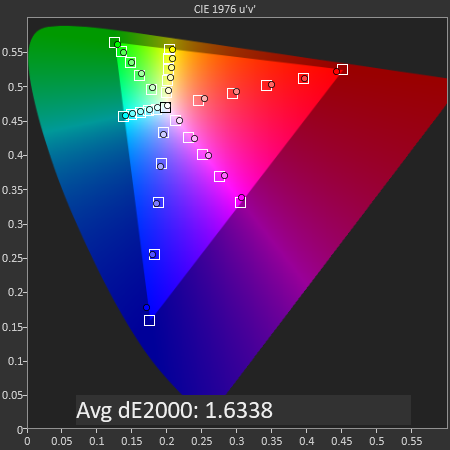
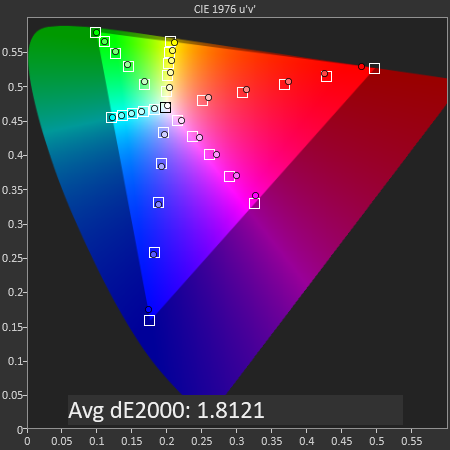 SpectraCal CalMAN
SpectraCal CalMAN
sRGB Mode / DCI-P3 Mode
The gamut and saturations accuracies for the sRGB and DCI-P3 modes are excellent, with only very slight deviations most prominent in magenta colours. In the DCI-P3 mode it also looks like OnePlus undershot the maximum chromacity for reds as it doesn’t quite reach the full gamut of the colour space – there’s also slight oversaturations in both profiles at the lower red levels meaning the colour compression on that channel is perfectly linearly configured.
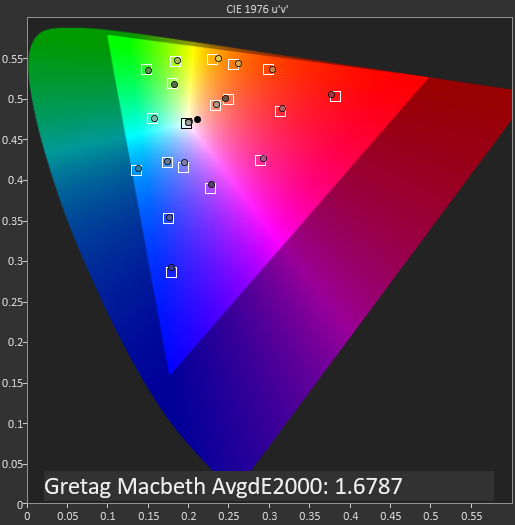
 SpectraCal CalMAN
SpectraCal CalMAN
sRGB Mode / DCI-P3 Mode
In the Gretag Macbeth charts which showcase common colour tones, both sRGB and DCI-P3 profiles perform very well with dE2000 of 1.67 and 1.87, while not perfect, it will be mostly unperceivable to most users in daily usage.
 SpectraCal CalMAN
SpectraCal CalMAN
sRGB GMB Comparison
 SpectraCal CalMAN
SpectraCal CalMAN
DCI-P3 GMB Comparison
The Adaptive mode is again extremely interesting as it doesn’t really adhere to any one colour space, and it’s something we most recently saw implemented in the MIX 2S; it’s a wide gamut colour space (DCI-P3), however skin tones are mapped to the sRGB space. This gives best compromise of bringing vivid colours to objects while attempting to display accurate skin tones. Given that this mode also has the single best pre-defined white-point, I think it’s generally the best alternative for most users.

SpectraCal CalMAN
Adaptive GMB Comparison
Overall the OnePlus 6 is an excellent screen with only two weaknesses; one of not having a high brightness mode at disposal to the user even though the hardware is capable of it, and the second point being that the resolution of the screen being rather stretched out for its form-factor.
In past OnePlus as well as most recent devices reviews we’ve brought up the point of resolution several times; as we’ll see in the battery life section there is effectively no disadvantage to 1440p AMOLED screens in terms of power as their emissive nature isn’t really affected by luminosity power efficiency deficiencies at higher resolutions the same way LCDs are, and the computational overhead of the higher resolution seems to be minimal.
What a 1440p screen would greatly differ in though is pricing, and here maybe OnePlus just isn’t ready to justify the increased component cost for devices that aim to be the best possible value.



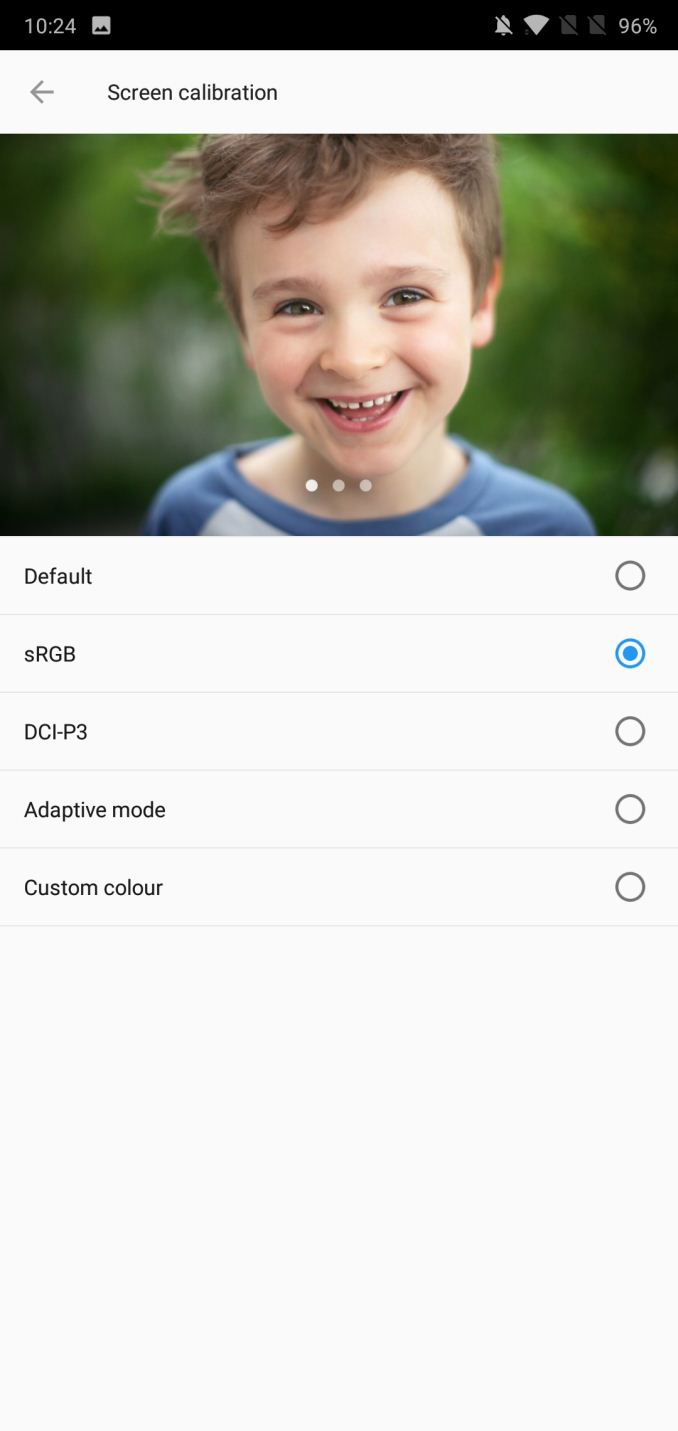
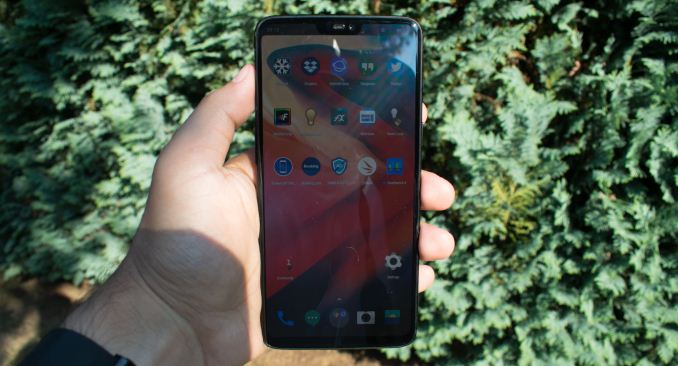
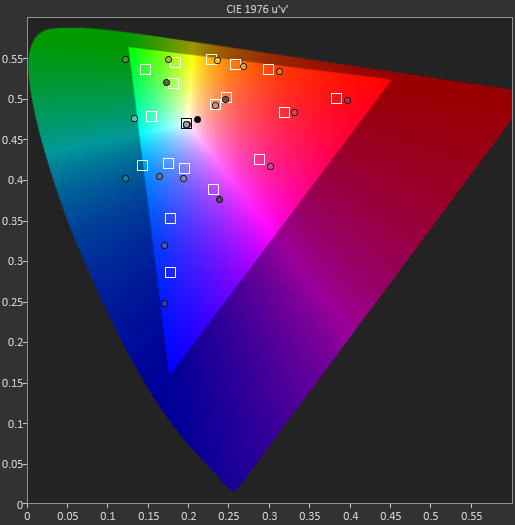








90 Comments
View All Comments
Icehawk - Saturday, July 28, 2018 - link
Ahhhhh. That’s why phones aren’t USB3, ok I always wondered why not but never actually researched why.jcc5169 - Friday, July 27, 2018 - link
Is One-Plus even available in the US market?PeachNCream - Friday, July 27, 2018 - link
That's a nice phone! I'd prefer the addition of a microSD slot by maybe adding the capability to one of the SIM slots (I've seen a few dual SIM phones offer up that option) since removable storage is nice to have if you're moving from one phone to another. In this case, there's the potential to lose quite a bit of data if the OP6 dies suddenly. The price increase for storage capacity is VERY reasonable as well. It's way outside of my price range for something I carry with me on a daily basis though. There's just too many day-to-day bumps and knocks around along with the risk of loss or theft that have me convinced that it's not worth the price of entry to get something above the bottom feeders like the $5.29 new Huawei I just picked up last week. Phones, in my mind, are disposable devices so low-cost is the way to go.eastcoast_pete - Friday, July 27, 2018 - link
Nice review, Andrei! Question: I may have overlooked it, but this phone is NOT water- or dust proof, at least as far as I can tell, correct? That is a major minus point for a flagship phone in my book, as it "breaks" the deal/compromise of sealed battery, but IP67 or 68 water and dust proofing. Hey, even Apple came around to that view eventually. Here, we get the worst of both worlds, no user-replaceable battery, no SD card slot, and no water and dust proofing.Different question @ Andrei: are all benchmark tests for phones conducted at about the same room temperature? I assume they are, but, if they are not, that would add a major variable. Heat dissipation is just so much easier when in a room at, let's say, 20 C, versus one at 30 C (and we are having hot summers this year). And, circling back to my comment about water proofing, I imagine it's harder for a fully sealed phone (like the majority of current flagship phones, i.e. S9, S9+, V30/35, Experia Z etc.) to dissipate heat than it is for phones that aren't fully sealed up. Any comments? Thanks!
Andrei Frumusanu - Friday, July 27, 2018 - link
It's not IP certified but as you may have read in some teardowns it does have many of the protections that are usually found in IP68 phones. I guess it could survive accidental water situations.The sustained are done in constant-ish (21+- 2°C) temperature, yes. I don't think IP proofing has any effect on thermals, the ingress points are irrelevant to temperature. Most phone's thermals are determined by the mid-frame build and how it's able to dissipate heat over its whole footprint to the screen and back.
128bit - Friday, July 27, 2018 - link
Never like chinese phones there phones looks good, but there quality overall not that good same like there cars and by the way this phone overheating.Dr. Swag - Friday, July 27, 2018 - link
Great article, but could you take care to proofread a bit better? There's tons of grammar mistakes (mostly missed commas) all over the place.Dr. Swag - Friday, July 27, 2018 - link
For the benchmarks, did you test for benchmark cheating at all?tsk2k - Friday, July 27, 2018 - link
Yes! Thank you so much Andrei and Anandtech, this is the only proper way to review a mobile phone.The web tests and frame drop testing is amazing, finally a way to quantify what I've been saying for years.
shoreview - Friday, July 27, 2018 - link
Too bad that they refuse to put Verizon Band 13 LTE in there. It's pointless crippling of the phone. Like the missing ex-Nextel CDMA band that Sprint uses.Any insight on why this is? Did Verizon and Sprint actively intervene to keep OnePlus off their networks? In any case I've been on Android from the start but the support situation and security update situation are leading me to look more and more at iPhone. Which won't come easy; the USB lockdown on iOS and certain aspects of the OS are annoying to say the least. But this was one of my last hopes for replacing my Verizon-supplied Note 4 with another Android and it has been dashed. Getting a non-carrier-branded Samsung is a non-starter until they start taking long-term security support seriously; even Google Pixel is short of Apple standards by a year or two.